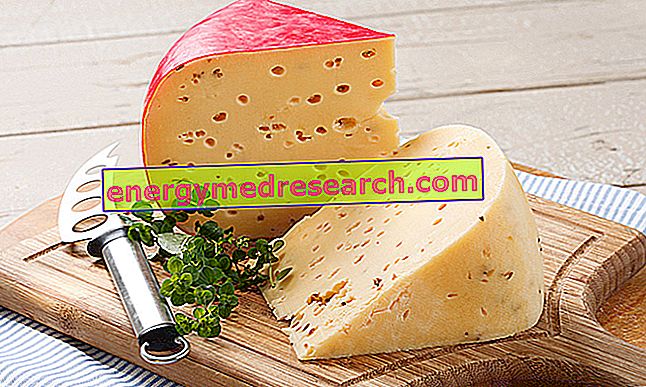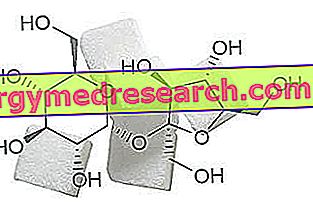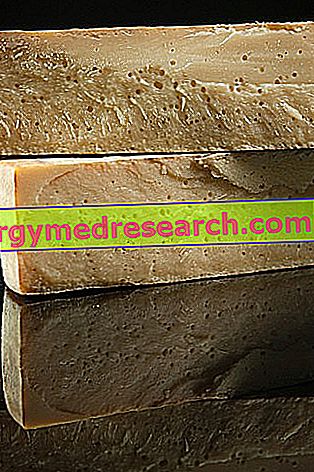What is Gouda?
Gouda (goudse kaas) is a famous Dutch hard cheese, made from cow's milk.
It takes its name from the place in which, for many centuries, it has been marketed, or the historic city of Gouda, in the South Holland. The first written mention of the cheese dates back to 1184 AD, which makes it one of the oldest known cheeses in the world. Even today, gouda is absolutely among the most well-known and consumed cheeses in the Netherlands.

Gouda is produced in circular shapes weighing between 1 and 16 kilograms. It has a fat content that is around 32% (50% of the dry substance) and also contains mineral salts and vitamins.
The term gouda is rather general and - both in Holland and in the world - it gives its name to various hard cheeses, even quite different from each other. In fact, many people maintain that the term "gouda" refers more to a dairy style rather than to a specific type of cheese, since the flavor of the various foods changes considerably with respect to the seasoning (according to which, six categories are identified ).
Only recently (October 2010), the European Commission has awarded the cheese produced in Gouda the title of Protected Geographical Indication (PGI), with the name of "Gouda Holland".
Nutritional Features
Gouda is a product that belongs to the second group of foods; its main function in the diet is to provide proteins rich in essential amino acids, calcium, phosphorus and vitamin B2.
Gouda is a cheese made from whole cow's milk; therefore, it supplies a very high amount of energy. In fact, the calories come mainly from lipids, followed by peptides and finally by small amounts of carbohydrates. The fatty acids contained in gouda cheese are mostly saturated, high biological value proteins and simple carbohydrates (lactose).
The fibers are absent and the cholesterol is abundant.
The gouda salt profile does not differ from the average of the cheeses and is abundant in calcium, phosphorus and sodium.
As far as vitamins are concerned, retinol equivalents (vit and provit A), B2 (riboflavin) and K2 ( menaquinones of bacterial origin - detail not shown in the table) are well present. Vitamin B12, generally abundant in cheeses, is rather scarce (detail not shown in the table).
| Nutritional composition for 100g of "Gouda" | |||||||||||||||||||||||||||||||||||||||||||||||||||||||||||||||||||||||||||||||||||||||||||||||
 | |||||||||||||||||||||||||||||||||||||||||||||||||||||||||||||||||||||||||||||||||||||||||||||||
Nutritional values (per 100 g of edible portion) | |||||||||||||||||||||||||||||||||||||||||||||||||||||||||||||||||||||||||||||||||||||||||||||||
| |||||||||||||||||||||||||||||||||||||||||||||||||||||||||||||||||||||||||||||||||||||||||||||||
Due to the abundance of calories, gouda does not lend itself to feeding overweight subjects. Furthermore, due to the exuberance of saturated fatty acids and cholesterol, this cheese should be avoided by people suffering from hypercholesterolemia.
Like most aged cheeses, gouda brings high amounts of sodium, a decidedly contraindicated aspect in the case of primary arterial hypertension. Furthermore, the abundance of sodium and potassium makes gouda a food unsuitable for certain types of renal impairment.
Gouda contains small amounts of lactose; therefore, it should not be consumed by the intolerant; on the contrary, there are no traces of gluten and can be contextualized in the celiac diet.
Being produced from milk, gouda is not part of the food allowed in the vegan diet; moreover, by exploiting the chemical action of rennet (obtained from the calf's stomach), it should also be excluded from the diet of vegetarian lacto eggs. It is not even allowed in the "halal" (Muslim) diet.
The average portion of gouda (as a dish) is about 70-120g (250-120kcal).
Outline of Production
Gouda is produced in the following way.
After milking and collecting whole milk (raw or pasteurized), the rennet is added.
Once the curd is well formed, the whey is drained and water is added. Said "curd washing", this last phase serves to eliminate lactose to give more sweetness to the finished food. In fact, even though it seems a paradox, the elimination of lactose has the significant organoleptic implication of a significant reduction in the concentration of lactic acid with aging (less bacterial commitment, also responsible for the low quantity of vit B12).
Once the curd is ready, it is placed in special molds and put under pressure for several hours; this allows the pieces to drain all the excess liquid and to acquire a characteristic shape.
The product is then dipped in a saline solution (brine), which will help to give the cheese a crust with a characteristic flavor.
The form is then dried for a couple of days and covered with a yellow coating (which prevents dehydration); finally, the seasoning takes place, which differentiates the various goudas with a hard and semi-hard dough:
- young (4 weeks),
- young-mature (8-10 weeks),
- mature (16-18 weeks),
- extra mature (7-8 months),
- old (10-12 months),
- very old (12 months and over).
Outline of Gastronomic Use
The more mature goudas gain hints of caramel gradually more and more intense, and tend to develop tiny crystals in the pasta.
The younger gouda, in natural or melted form, are mainly used to stuff sandwiches.
In the Netherlands, gouda cut into cubes and served with Dutch mustard is a very popular dish. The more seasoned ones are also served with sugar or apple syrup.
The old and very old gouda cubes are accompanied by Vino Porto or Trappist beers (Triple and Double, clear and very strong).



